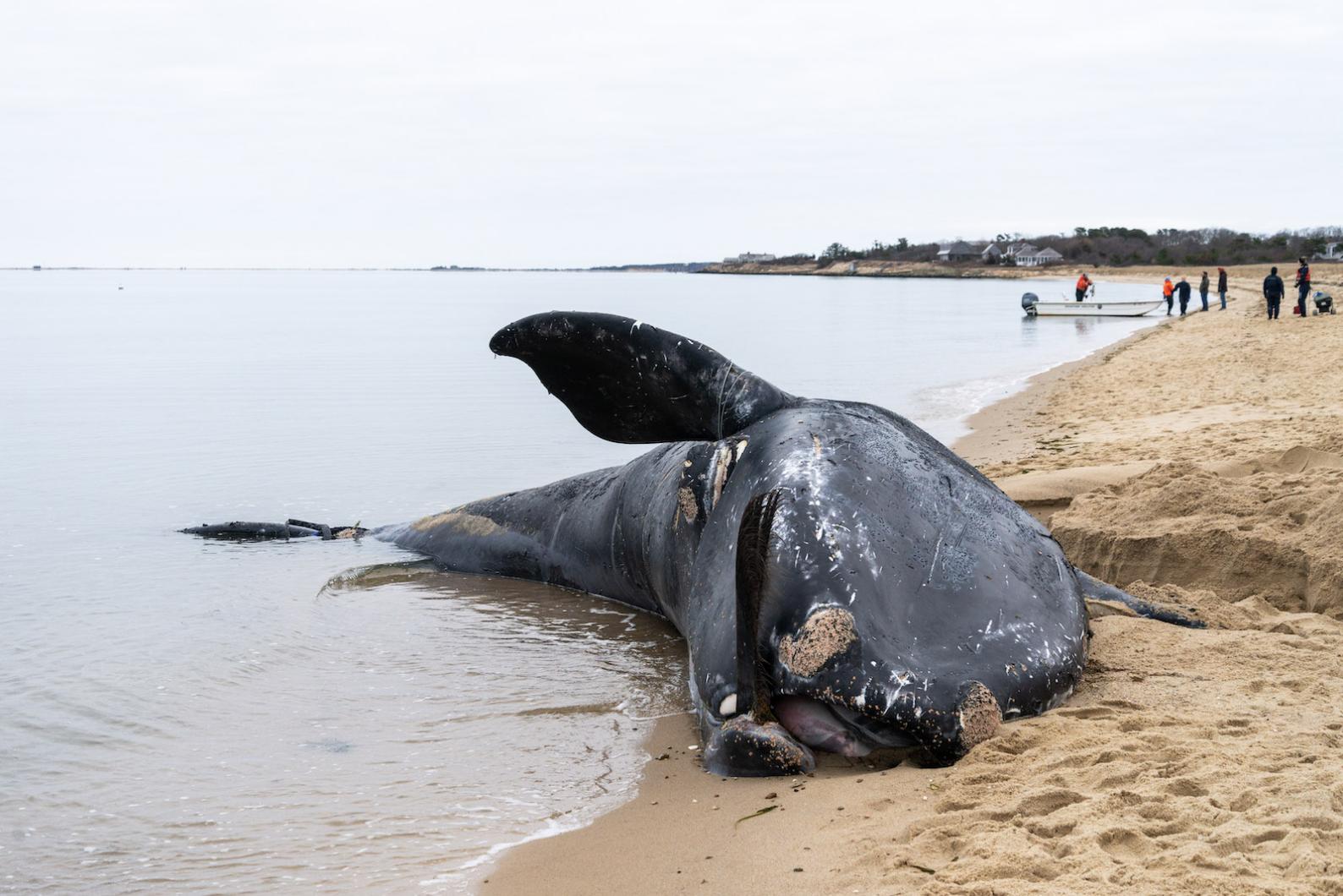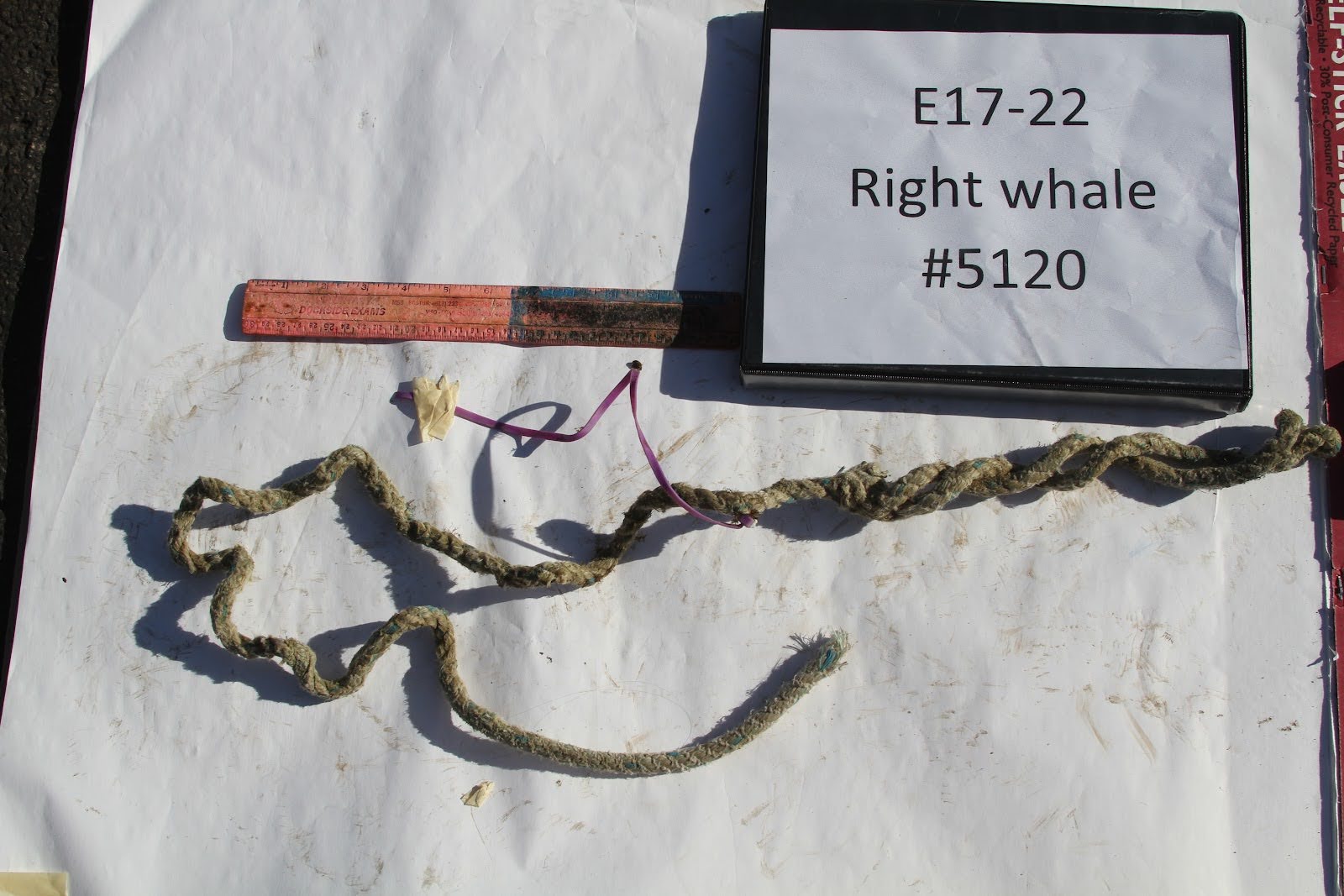The rope embedded in the tail of a dead young right whale that washed up on the Vineyard last month is consistent with buoy lines used by trap fishermen in Maine, according to the National Oceanic and Atmospheric Administration.
An analysis of the rope recovered from the whale found purple markings that are used to identify trap fishing gear from the Pine Tree State, NOAA wrote in a statement Wednesday. The finding is another clue into the whale's death, though final results from the investigation led by the International Fund for Animal Welfare have yet to be released.
Preliminary results show the whale suffered from chronic entanglement. The whale's death was a blow to the species, which now has dwindled to fewer than 360 whales.
“Entanglements are a constant threat to right whales, cutting their lives short and painting a disheartening future for this species,” Conservation Law Foundation senior counsel Erica Fuller said in a statement.
Maine has the largest lobster fishing fleet in the country and the fishery has been under intense scrutiny for its potential to harm the endangered whale species. The fishermen there have long maintained that they weren’t contributing to the whale’s demise.
“There have been concerns about the threat Maine fishing gear poses to right whales for years," Ms. Fuller said. “It’s time to move forward with new fishing practices to give these endangered whales a chance at survival.”
The last documented entanglement of a right whale in Maine occurred in 2004, and no deaths of the species have been recorded from whales entangled in the state.
According to Gib Brogan, fisheries campaign director with nonprofit Oceana, regulations for Maine fishermen to use rope that could be traced back to their state of origin were put in place in 2022.
“The Maine lobster industry has argued for quite some time that they don't need to be subject to regulations and safeguards against entangling right whales, because there was a lack of evidence,” Mr. Brogan said. “A lot of that was caused by the fact that there was no way to tell the origin of the gear until recently.”
“This confirms what we've suspected for quite some time, that that the Maine waters are dangerous for right whales,” he said. “Wherever there's rope and there are whales there is the risk.”
The Maine Lobstermen’s Association, an industry group representing fishermen in Maine, said in a statement that it was deeply saddened by the whale's death and remained committed to finding a solution that ensures a future for the whales and the $385 million lobster fishery.
“Maine lobstermen have made significant changes to how they fish over the last 25 years to avoid entanglement and continue gear testing,” the group said. “The MLA will continue this important work as we review the data and evidence that [the National Marine Fisheries Service] has collected.”
The whale that washed up on the Vineyard on Jan. 28, a three-year-old female identified as Catalog #5120 by the New England Aquarium, was first seen entangled in the Gulf of St. Lawrence in August of 2022, and attempts to free it were unsuccessful.
In June 2023, the whale was spotted again in the Gulf of St. Lawrence, showing signs of declining health as the rope had become deeply embedded around its tail.








Comments (5)
Comments
Comment policy »